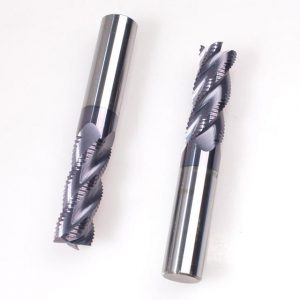
When the helix angle is larger, the roughness of the face will be more ideal. When the helix angle is larger, the fluctuation surface will be worse. In the reverse milling, the change of the helix angle has no effect on the precision of the machining plane, but there is a considerable effect when the milling is done. When the helical angle when the milling is smaller, the precision of the processing surface will be worse, especially when the spiral angle of 10 degrees is quite obvious. Because the cutting force of the milling is smaller than that of the reverse milling, when the helix angle is small, the cutting will have more intense impact. The larger the helix angle, the worse the chip removal. Low helix angle is more suitable for milling ditch, high helix angle is not suitable for milling ditch. High helix angle milling ditch Cao will use a small amount of fast cutting method, which is the latest method. Comparison of Cutting Resistance in Different Helix Angle. The smaller the helix angle, the greater the cutting torque, the smaller the helix angle is, the smaller the cutting torque is. The smaller the helix angle, the smaller the axial tension, the greater the greater the axial angle of the opposite helix angle. If you use a larger helix angle of the end mill, you must use a strong grasp of the force of the chuck. The angle of the high helix angle end mill is sharper and less likely to crack than the low helix angle. If the angle is large, the diameter of the gun will be smaller, so the tool life can be extended.


